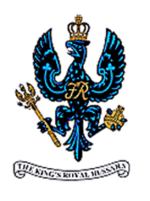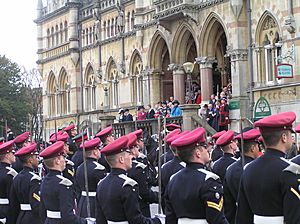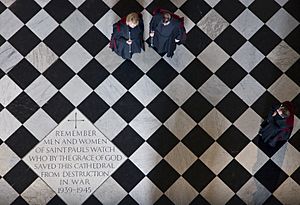King's Royal Hussars facts for kids
Quick facts for kids The King's Royal Hussars |
|
|---|---|

Cap badge of the King's Royal Hussars
|
|
| Active | 2 December 1992- |
| Allegiance | |
| Branch | |
| Type | Line Cavalry |
| Role | Armoured |
| Size | One regiment |
| Part of | Royal Armoured Corps |
| Garrison/HQ | RHQ (North) - Preston RHQ (South) - Winchester Regiment - Tidworth |
| Commanders | |
| Colonel-in-Chief | HRH The Princess Royal |
| Colonel of the Regiment |
General Sir Richard Shirreff KCB CBE |
| Insignia | |
| Tactical Recognition Flash |  |
| Arm Badge | Crossed Kukris From 14th/20th King's Hussars |
| Abbreviation | KRH |
The King's Royal Hussars (KRH) is a special cavalry regiment in the British Army. It is part of the Royal Armoured Corps, which uses tanks and other armored vehicles. The KRH was formed in 1992 and is based at Tidworth. It acts as the main armored regiment for the 12th Armoured Infantry Brigade.
Soon, the KRH will change its Challenger 2 tanks for newer Ajax vehicles. This change is part of a plan called Army 2020 Refine.
Contents
History of the King's Royal Hussars
The King's Royal Hussars regiment was created on December 4, 1992. It was formed by joining two older regiments together. These were:
- The Royal Hussars (Prince of Wales's Own)
- 14th/20th King's Hussars
Early Deployments and Recognition
When the KRH was first formed, it was based in Münster, Germany. From there, its soldiers went on important missions. In June 1994, they deployed to Northern Ireland for an operation called Operation Banner. Later, in January 1996, they went to Bosnia and Herzegovina.
While in Bosnia, the KRH worked with the 2nd Canadian Multi National Brigade. Their hard work earned them a special award called the Canadian Forces' Unit Commendation. This was the first time a foreign military unit had ever received this award.
Recent Operations and Missions
The King's Royal Hussars have taken part in many missions around the world. They have sent units to Bosnia, Kosovo, and Northern Ireland. They also served in Iraq during Operation Telic and in Afghanistan during Operation Herrick. These operations helped to keep peace and provide security in different regions.
The Crossed Kukri Badge
Soldiers of the King's Royal Hussars wear a special badge on their arm. It shows two crossed kukri knives. A kukri is a traditional knife from the Gurkha people. This badge has a special meaning from 1945.
During World War II, a part of the 14th/20th King's Hussars fought bravely in Italy. They attacked a town called Medicina alongside the 2nd Battalion, 6th Gurkha Rifles. Even though they were outnumbered, they caused heavy losses to the German defenders. To remember this brave action, the 14th/20th King's Hussars started wearing the crossed kukri badge. The King's Royal Hussars continue this tradition today.
Images for kids





